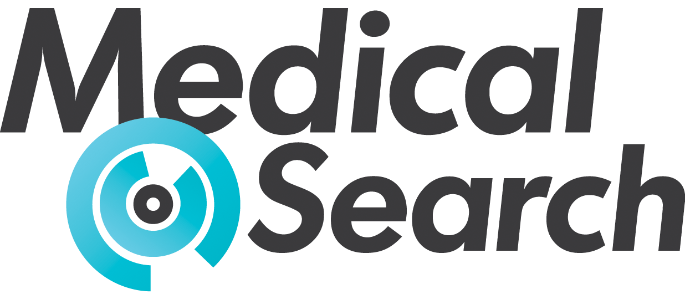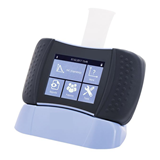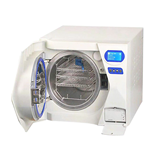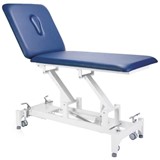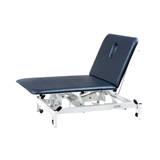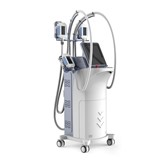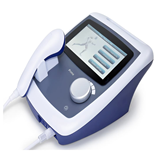Maximise patient satisfaction with TGA-compliant face contouring devices. Understand device features, face shape considerations, and clinical best practices in this comprehensive Australian guide.
Key takeaways
- Face contouring demand is rising: Non-surgical facial contouring is projected to grow by 14.6% annually in Australia, driven by patient demand for customisation and minimal downtime
- Device selection must align with facial anatomy: Cryolipolysis, RF, HIFU and EMS technologies each suit different face shapes, treatment zones, and patient profiles.
- Treatment plans must be face-shape specific: The five key face shapes (oval, round, square, heart, diamond) require tailored device selection and energy delivery protocols.
- Customisation improves outcomes: Clinics using facial analysis software and 3D imaging report up to 32% better patient satisfaction scores.
- Compliance and training are essential: Devices must be ARTG-listed and operators should be trained in facial proportions and TGA-approved protocols.
Introduction: The future of face contouring is personalised
Non-invasive face contouring has become a cornerstone of modern aesthetic practice. Australian clinics are seeing growing demand from patients who want targeted, customised treatments to enhance facial symmetry, reduce fat, and lift sagging skin—without surgery.
Yet many buyers make the mistake of purchasing devices without a clear understanding of how to design effective treatment plans tailored to different face shapes. This guide will walk you through how to evaluate face contouring devices in Australia based on their clinical use, facial suitability, and technology.
Whether you're setting up a new clinic or expanding your offerings, this article will help you make an informed and compliant purchasing decision.
Understanding face shapes and treatment priorities
Each face shape has unique characteristics that determine how fat is distributed and how facial skin responds to lifting or tightening technologies. The five most common face shapes include:
1. Oval
- Balanced proportions
- Slight narrowing at chin and forehead
- Treatment focus: jaw refinement, cheek volume lift
2. Round
- Fuller cheeks, equal width and height
- Often require facial slimming treatments
- Treatment focus: cheek sculpting, chin definition
3. Square
- Prominent jawline, angular shape
- Treatment focus: softening jaw edges, lifting lower face
4. Heart
- Wider forehead, narrow chin
- Treatment focus: volume at lower face, lifting mid-face
5. Diamond
- Narrow forehead and chin, prominent cheekbones
- Treatment focus: softening cheekbone prominence, balancing features
Matching device features and treatment strategies to these anatomical differences improves outcomes significantly.
Face contouring technologies: what works best for each shape?
When purchasing a face contouring device, it’s crucial to understand how the underlying technology affects tissue, fat, and muscle. Here’s a breakdown of the most commonly used technologies in Australia:
Cryolipolysis (fat freezing)
- Mechanism: Controlled cooling to break down submental (chin) and jowl fat
- Best suited for: Round or oval faces with localised fat pockets
- Common use zones: Double chin, lower cheeks
- Clinical note: Must avoid excessive fat removal in patients with already narrow jawlines (e.g., heart or diamond face shapes)
Radiofrequency (RF)
- Mechanism: Heats skin to stimulate collagen and elastin
- Best suited for: Skin tightening and mild lifting across all face shapes
- Common use zones: Jawline, cheeks, periorbital areas
- Clinical note: Bipolar or multipolar RF provides better precision for square or angular faces
High-Intensity Focused Ultrasound (HIFU)
- Mechanism: Delivers focused ultrasound to deeper tissue layers
- Best suited for: Lifting and tightening in oval, heart, or diamond-shaped faces
- Common use zones: Mid-face, brows, lower face
- Clinical note: Requires operator expertise and should be used cautiously on thinner faces
Electromagnetic Stimulation (EMS)
- Mechanism: Stimulates facial muscles to tone and lift
- Best suited for: Enhancing cheek and jaw definition in square and round faces
- Common use zones: Jawline, cheeks, forehead
- Clinical note: Ideal as a complementary treatment to RF or cryolipolysis
Customising treatment protocols by face shape
Round face
- Goals: Slimming and defining contours
- Recommended devices: Cryolipolysis + RF
- Protocol tips:
- Avoid over-treatment near cheekbones to prevent a gaunt look
- Use radiofrequency to contract tissue post fat reduction
Oval face
- Goals: Enhance symmetry, lift mid-face
- Recommended devices: HIFU or RF
- Protocol tips:
- Focus on cheek elevation and mild skin tightening
- Use EMS for subtle sculpting
Square face
- Goals: Soften angles, lift jowls
- Recommended devices: RF + EMS
- Protocol tips:
- Use bipolar RF to lift lower face
- EMS helps reduce jaw tension and bulk
Heart face
- Goals: Add volume to lower face, balance upper-lower ratio
- Recommended devices: HIFU + RF
- Protocol tips:
- Focus HIFU under the cheekbones
- RF should be directed at nasolabial folds
Diamond face
- Goals: Soften mid-face prominence, create harmony
- Recommended devices: RF + EMS
- Protocol tips:
- Avoid aggressive cheek treatment
- Strengthen lower face muscle tone
What to look for when buying a face contouring device in Australia
To ensure safe, effective and compliant practice, consider the following when choosing a face contouring device:
1. ARTG Listing
- All devices used in Australia must be listed on the Australian Register of Therapeutic Goods (ARTG)
- Confirm that the specific model and sponsor are registered
2. Adjustable settings
- Look for devices that allow modulation of energy level, pulse duration, and treatment depth
- This ensures compatibility with different skin types and facial structures
3. Interchangeable handpieces
- Facial contours vary greatly, so multiple applicators are essential for targeted delivery
4. Facial mapping or imaging software
- Systems with integrated diagnostics allow for better treatment planning and outcome prediction
- Clinics using such tools have reported 25% fewer retreatments
5. Local training and clinical support
- Prioritise brands that offer TGA-compliant training and ongoing support from Australian-based reps
Patient safety and contraindications
Ensuring patient safety is paramount when designing treatment plans with face contouring devices. Understanding contraindications and pre-treatment assessments helps prevent complications and optimises outcomes.
Common contraindications to consider:
- Pregnancy and breastfeeding: Most non-invasive contouring devices are not recommended due to unknown effects on foetal development and lactation.
- Implanted electronic devices: Pacemakers, defibrillators, or cochlear implants may be affected by electromagnetic or radiofrequency-based treatments.
- Skin infections or inflammations: Active eczema, psoriasis, open wounds, or infections in the treatment area increase the risk of adverse reactions.
- Autoimmune disorders and certain chronic illnesses: Conditions such as lupus or uncontrolled diabetes can impair healing.
- Recent facial surgery or fillers: Allow adequate healing time before non-invasive treatments, typically 4–6 weeks.
- Metal implants in treatment zones: Some devices may interact adversely with metal, causing discomfort or burns.
Pre-treatment assessment essentials:
- Detailed medical history including medications and allergies
- Skin type and thickness analysis
- Face shape and anatomy evaluation
- Clear explanation of treatment expectations and possible side effects
Post-treatment care:
- Advise patients on mild redness, swelling, or tenderness which typically resolves within days
- Provide hydration and sun protection guidance
- Schedule follow-ups to monitor progress and address concerns promptly
Adhering to these safety protocols ensures your clinic maintains high standards and minimises risk, while enhancing patient trust and satisfaction.
Clinical evidence and effectiveness
In the competitive Australian aesthetic market, relying on devices supported by robust clinical evidence is crucial. Here is a summary of key findings on the effectiveness of popular face contouring technologies for different face shapes:
Cryolipolysis
- Studies show an average 20–25% reduction in submental fat after one to two treatments.
- Particularly effective in patients with round or oval face shapes presenting with double chins or localized fat deposits.
- Australian practitioners report over 85% patient satisfaction with visible contouring results within 8 to 12 weeks.
Radiofrequency (RF)
- Multiple clinical trials demonstrate significant skin tightening and collagen stimulation, improving skin elasticity by up to 30% after a course of 4–6 treatments.
- Suitable for all face shapes, especially those needing mild lifting and wrinkle reduction.
- Non-invasive and minimal downtime contribute to broad patient acceptance.
High-Intensity Focused Ultrasound (HIFU)
- Research supports HIFU’s ability to lift deep facial tissues, with an average 1.5–2 mm tissue lift measurable at 12 weeks post-treatment
- Most effective for oval, heart, and diamond face shapes requiring deeper tightening.
- Operator skill is critical; proper training correlates with a 40% improvement in treatment outcomes.
Electromagnetic Stimulation (EMS)
- Emerging studies reveal EMS improves muscle tone and facial contour, with up to 25% increased muscle contraction after 6 weekly sessions
- Commonly combined with RF or cryolipolysis for comprehensive sculpting.
Summary
Using devices backed by strong clinical data supports evidence-based practice and patient confidence. It also aligns with TGA expectations for therapeutic claims, which is important for regulatory compliance and marketing transparency.
Integration with other treatments
Combining face contouring devices with complementary aesthetic treatments can enhance results and patient satisfaction. A multimodal approach tailors protocols to individual anatomy, ageing signs, and client goals.
Common integrations include:
- Injectable dermal fillers and neuromodulators
- Fillers add volume and definition to cheeks, jawlines, or chin areas that contouring devices cannot address alone.
- Botox or other neuromodulators soften dynamic wrinkles and muscle activity, complementing tightening from RF or HIFU.
- Topical skincare regimens
- Medical-grade products containing retinoids, peptides, and antioxidants boost collagen production and skin quality.
- Pre- and post-treatment skincare enhances and prolongs device treatment benefits.
- Microneedling or fractional laser
- These therapies promote skin remodelling and scar reduction, synergising with the lifting effects of contouring devices.
- Lifestyle and nutritional counselling
- Advising patients on hydration, diet, and sun protection supports treatment longevity and skin health.
Practical tips for clinics:
- Schedule device treatments and injectables in complementary sequences—e.g., allow 2 weeks between RF and filler injections for optimal healing.
- Use facial mapping software to identify areas requiring volume restoration versus fat reduction or tightening.
- Educate patients about the benefits of a comprehensive approach to set realistic expectations and encourage treatment packages.
By integrating technologies and therapies, your clinic can offer personalised, holistic facial rejuvenation solutions that appeal to a broader clientele and maximise business growth.
Compliance and training considerations
- The device must meet TGA Essential Principles of safety, efficacy, and labelling
- Operators should have:
- Certificate in non-surgical facial aesthetics or dermal therapies
- Hands-on training specific to the device
- Ongoing CPD in facial anatomy and contouring
Clinics found using non-ARTG devices may face fines, while insurers often deny claims tied to non-compliant devices.
FAQs: Designing treatment plans for different face shapes
Q1: Can the same contouring device be used on all face shapes?
Yes, but treatment parameters must be customised. Adjustable devices with multiple applicators are ideal.
Q2: How do I know which technology suits my target clientele?
Assess your client base demographics. For younger clients seeking subtle definition, EMS or RF may be enough. Older clients with skin laxity may benefit more from HIFU.
Q3: Are multi-platform devices worth the investment?
Yes. Devices combining RF, HIFU, and EMS offer flexibility across all face shapes and save space in smaller clinics.
Q4: What face shape is most in demand for contouring?
Round and square faces are the most commonly treated for contouring in Australian clinics, followed by heart-shaped faces for lifting.
Q5: What is the average ROI on face contouring devices in Australia?
Clinics report ROI within 6–12 months for devices offering multimodal technology, with treatment prices ranging from $250–$750 per session.
Final thoughts
Designing effective treatment plans for different face shapes isn't just good clinical practice—it’s essential for patient satisfaction and business success. By choosing the right TGA-approved face contouring device and tailoring your approach to individual anatomy, your clinic can achieve safer outcomes, higher retention, and a reputation for excellence.
Before purchasing, ensure the device is compliant, supported, and adaptable to the diverse aesthetic needs of Australian clients. The future of facial contouring is personal, and your equipment should be too.
